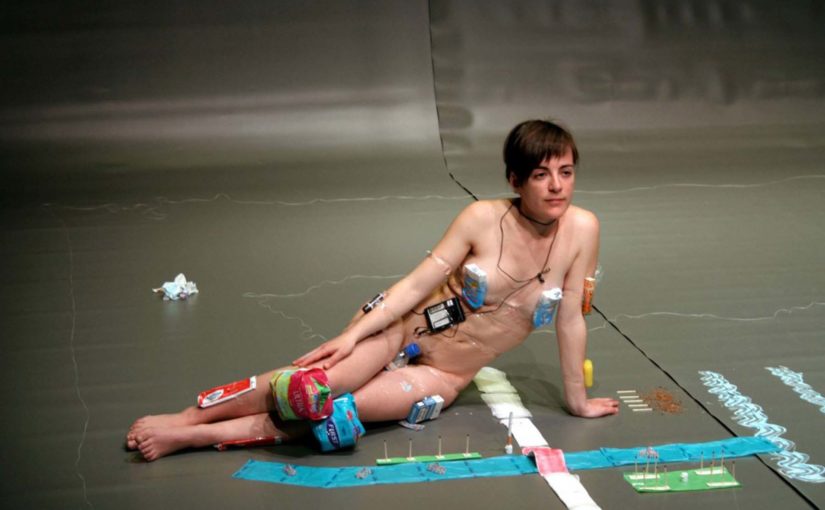«From a plastic bag, out come a handful of everyday items such as paper tissues, matches and cigarettes, tampons and candies. Useful, everyday products that we’re used and accustomed to, that we don’t even think about.
A second skin, as it were, or a kind of general clothing that is slightly more than skin deep than the habitual clothing or footwear. Products that are actually designed for an extremely intimate relationship with our own bodies, even for the up-keeping of a certain aesthetics and self-representation.
That is the reason why their roles should not be underestimated within the game. It is precisely to point out to us that these products, from the most interesting to the most banal, have a word to say on our bodies’ biographies, that this tragic performance is brought into the scenic space inside a plastic bag.
A body that is both a product and a producer of landscapes, discourses and hierarchies, such as the ones that part North and South, adulthood and childhood, women and men, the living and the dead.
Landscapes and discourses that identify this side to oppose it to that side. For the image that one holds of one’s body, that which one does with it, the representation that one has of it, and that which is lived by us in it, it is all done in a space of a certain culture. And that given culture is developed according to production rules that affect the bodies, to which bodies are associated. That is all correct, yes, but in the end who’s producing whom?»
Paula Caspão, Março 2005

© Patrícia Almeida